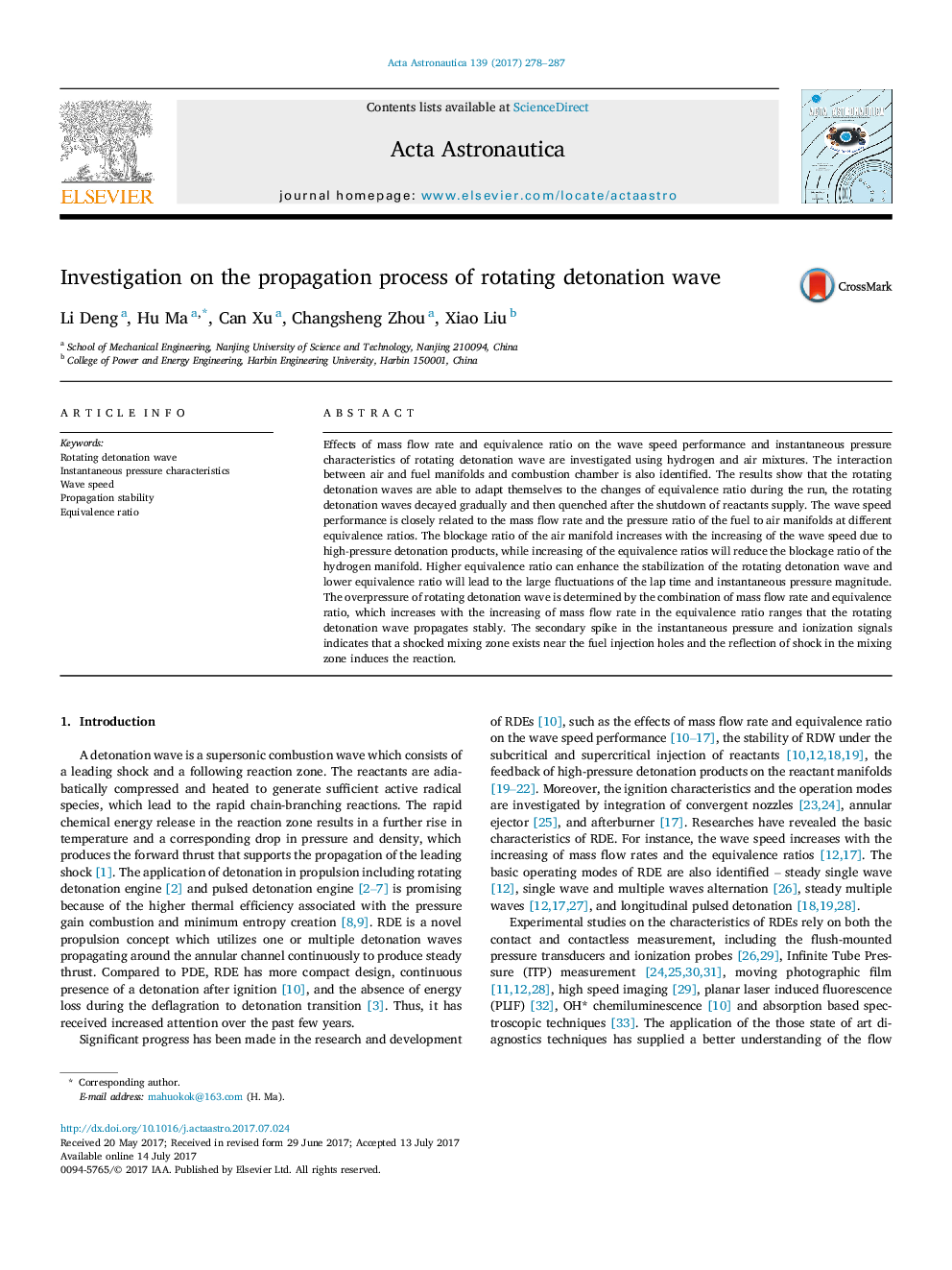| Article ID | Journal | Published Year | Pages | File Type |
|---|---|---|---|---|
| 5472271 | Acta Astronautica | 2017 | 10 Pages |
Abstract
Effects of mass flow rate and equivalence ratio on the wave speed performance and instantaneous pressure characteristics of rotating detonation wave are investigated using hydrogen and air mixtures. The interaction between air and fuel manifolds and combustion chamber is also identified. The results show that the rotating detonation waves are able to adapt themselves to the changes of equivalence ratio during the run, the rotating detonation waves decayed gradually and then quenched after the shutdown of reactants supply. The wave speed performance is closely related to the mass flow rate and the pressure ratio of the fuel to air manifolds at different equivalence ratios. The blockage ratio of the air manifold increases with the increasing of the wave speed due to high-pressure detonation products, while increasing of the equivalence ratios will reduce the blockage ratio of the hydrogen manifold. Higher equivalence ratio can enhance the stabilization of the rotating detonation wave and lower equivalence ratio will lead to the large fluctuations of the lap time and instantaneous pressure magnitude. The overpressure of rotating detonation wave is determined by the combination of mass flow rate and equivalence ratio, which increases with the increasing of mass flow rate in the equivalence ratio ranges that the rotating detonation wave propagates stably. The secondary spike in the instantaneous pressure and ionization signals indicates that a shocked mixing zone exists near the fuel injection holes and the reflection of shock in the mixing zone induces the reaction.
Related Topics
Physical Sciences and Engineering
Engineering
Aerospace Engineering
Authors
Li Deng, Hu Ma, Can Xu, Changsheng Zhou, Xiao Liu,
